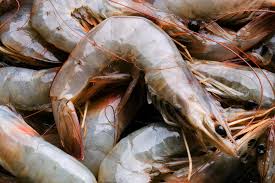Shrimp is a type of shellfish that is commonly consumed as food. It is a small, edible crustacean with a hard exoskeleton and a long, narrow body. Shrimp can be found in both freshwater and saltwater environments and are a popular seafood choice around the world.
Shrimp can be prepared in a variety of ways, including grilling, boiling, frying, and sautéing. They are a good source of protein and contain several essential nutrients, such as selenium and vitamin B12. However, shrimp can also be high in cholesterol and may cause allergic reactions in some individuals.
Shrimp can be enjoyed on its own or used as an ingredient in dishes such as shrimp cocktail, shrimp scampi, shrimp stir-fry, and shrimp tacos. It is often served with sauces or dips, such as cocktail sauce, tartar sauce, or garlic butter.
Read Also: Health Benefits and Uses of Lobster
Description of Shrimp
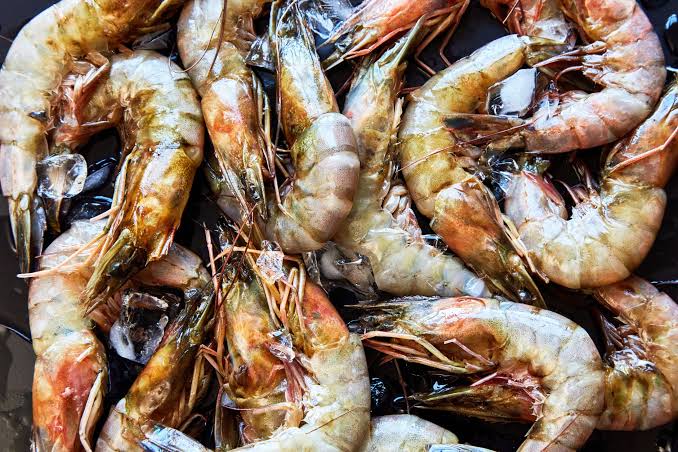
Shrimp have ten legs, with the first pair of legs modified into pincers that are used for grasping food and defending themselves against predators. They also have five pairs of swimming legs, which they use to propel themselves through the water.
Shrimp come in a variety of colors, including brown, pink, gray, and green. Some species have stripes or spots on their bodies, while others are more plain in appearance. The color and pattern of a shrimp can vary depending on its species, habitat, and age.
Shrimp are an important food source for humans and are widely consumed around the world. They are often sold cooked or raw, and can be prepared in a variety of ways, including grilling, boiling, frying, and sautéing.
Health Benefits of Shrimp
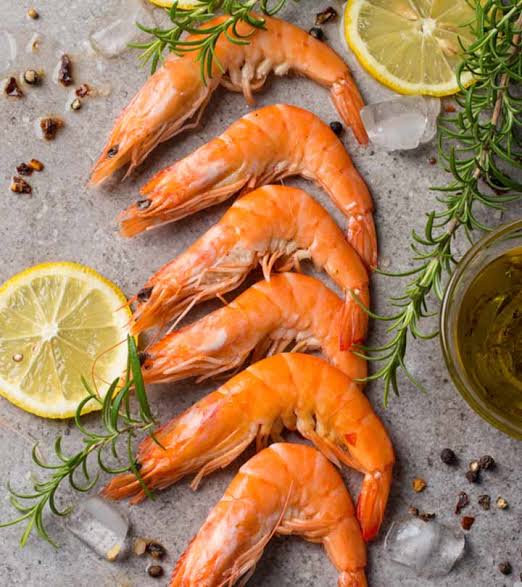
Good source of protein: Shrimp is a good source of high-quality protein, which is essential for building and repairing tissues in the body.
Low in calories: Shrimp is low in calories, which makes it a good food choice for people trying to lose weight or maintain a healthy weight.
Low in fat: Shrimp is low in fat, particularly saturated fat, which can help lower the risk of heart disease.
Contains omega-3 fatty acids: Shrimp is a good source of omega-3 fatty acids, which are essential for brain and heart health.
Contains vitamin B12: Shrimp is high in vitamin B12, which is important for maintaining healthy nerve cells and red blood cells.
Contains selenium: Shrimp is a good source of selenium, which is a mineral that plays a key role in immune function and thyroid health.
Contains phosphorus: Shrimp is high in phosphorus, which is important for bone health and the production of energy in cells.
Contains copper: Shrimp is a good source of copper, which is important for the formation of red blood cells and the maintenance of healthy bones and nerves.
Contains zinc: Shrimp is a good source of zinc, which is important for immune function, wound healing, and the production of DNA.
Contains iron: Shrimp is a good source of iron, which is important for the production of hemoglobin and the prevention of anemia.
Low in carbohydrates: Shrimp is low in carbohydrates, making it a good food choice for people on low-carb diets.
Contains choline: Shrimp is a good source of choline, which is important for brain and liver health.
Contains iodine: Shrimp is a good source of iodine, which is important for thyroid health and the production of thyroid hormones.
Helps improve heart health: The omega-3 fatty acids in shrimp can help lower triglyceride levels and reduce the risk of heart disease.
Helps improve brain function: The omega-3 fatty acids and choline in shrimp can help improve brain function and reduce the risk of cognitive decline.
Helps maintain healthy skin: The high protein content in shrimp can help maintain healthy skin and promote healing of skin wounds.
May help reduce inflammation: The omega-3 fatty acids in shrimp may help reduce inflammation in the body, which can help prevent chronic diseases.
May help reduce the risk of cancer: Some studies have suggested that the antioxidants and anti-inflammatory compounds in shrimp may help reduce the risk of certain types of cancer, such as colorectal cancer.
Uses of Shrimp
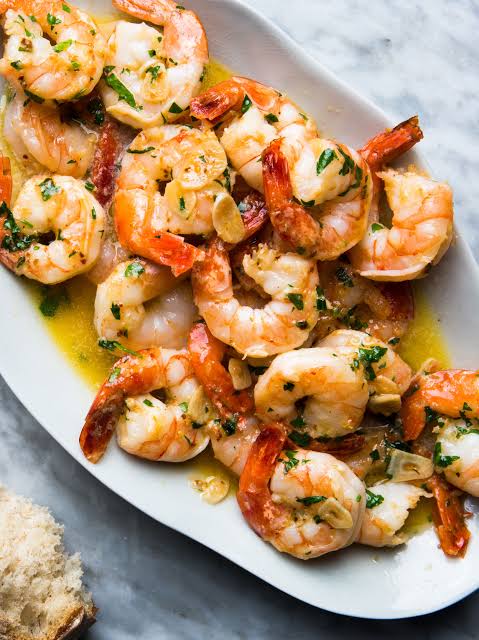
Shrimp is a popular seafood that is used in a variety of dishes around the world. Here are some common uses of shrimp:
Shrimp cocktail: Shrimp cocktail is a classic appetizer that features boiled shrimp served with a cocktail sauce made from ketchup, horseradish, and other ingredients.
Shrimp scampi: Shrimp scampi is a pasta dish that features sautéed shrimp in a garlic butter sauce. It is often served with linguine or other long pasta.
Shrimp fried rice: Shrimp fried rice is a Chinese dish that features cooked rice stir-fried with shrimp, vegetables, and seasonings.
Shrimp tacos: Shrimp tacos are a popular Mexican dish that features grilled or sautéed shrimp served on soft tortillas with toppings such as avocado, salsa, and cilantro.
Shrimp salad: Shrimp salad is a light and refreshing dish that features boiled or grilled shrimp served on a bed of lettuce with other vegetables and a dressing of your choice.
Shrimp scampi pizza: Shrimp scampi pizza is a pizza topped with sautéed shrimp, garlic, butter, and cheese. It is a delicious and unique twist on traditional pizza.
Shrimp stir-fry: Shrimp stir-fry is a quick and easy dish that features sautéed shrimp, vegetables, and seasonings. It is often served with rice or noodles.
Shrimp bisque: Shrimp bisque is a creamy soup made with pureed shrimp, cream, and other ingredients. It is a rich and indulgent dish that is perfect for special occasions.
Shrimp cocktail sauce: Shrimp cocktail sauce is a classic condiment that is made with ketchup, horseradish, lemon juice, and other ingredients. It is often served with boiled or chilled shrimp.
Shrimp kebabs: Shrimp kebabs are a popular barbecue dish that features skewered shrimp, vegetables, and seasonings. They are often grilled over an open flame and served with a dipping sauce.
Overall, shrimp is a versatile ingredient that can be used in many different ways. It is a delicious and healthy source of protein that can be enjoyed in a variety of dishes.
Read Also: Health Benefits and Uses of Oysters
Preparation and Storage of Shrimp
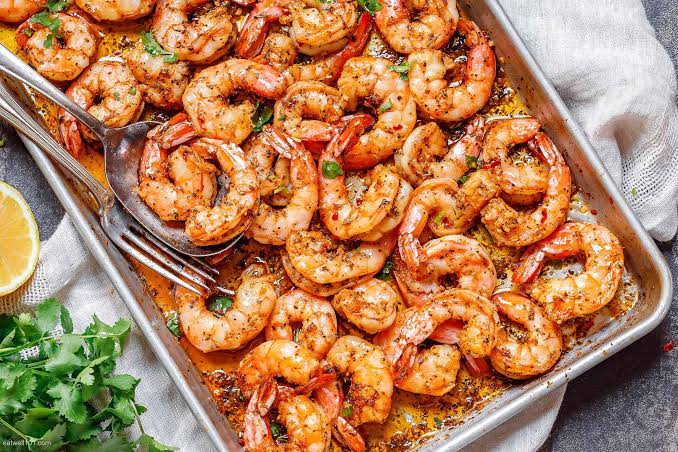
Preparation:
Thawing: If the shrimp is frozen, it should be thawed properly. The best way to thaw frozen shrimp is to place it in the refrigerator overnight. Alternatively, you can thaw it by placing it in a bowl of cold water for about 15-20 minutes.
Cleaning: Rinse the shrimp thoroughly with cold water to remove any dirt, debris or sand.
Deveining: Devein the shrimp by making a shallow slit along the back of the shrimp and removing the black vein.
Cooking: Shrimp can be cooked in a variety of ways, including boiling, grilling, frying, sautéing, and baking. The cooking time will depend on the method used and the size of the shrimp.
Storage:
Refrigeration: Cooked shrimp should be refrigerated immediately and can be stored in an airtight container for up to 3-4 days. Raw shrimp should be refrigerated at a temperature of 32-39°F (0-4°C) and should be consumed within 1-2 days of purchase.
Freezing: Shrimp can be frozen for up to 6 months. Place the shrimp in an airtight container or a freezer bag and remove as much air as possible before sealing. Label the container or bag with the date and store it in the freezer.
Thawing: Frozen shrimp should be thawed in the refrigerator overnight. Alternatively, it can be thawed in cold water or using a microwave on the defrost setting.
Discard: Discard any shrimp that has a strong odor, slimy texture, or is discolored. This can be a sign of spoilage and can lead to foodborne illness.
By following these tips, you can prepare and store shrimp safely and enjoy its delicious flavor in a variety of dishes.

